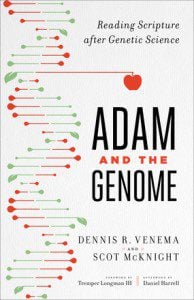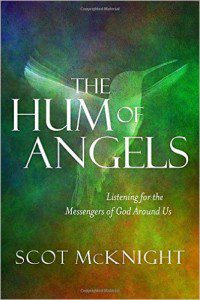Reviving baseball in African American communities — now I like basketball, but baseball’s a great game!
The number of major league baseball players on opening day rosters who identified themselves as African-Americans dropped to 8.3 percent this year. The highest percentage of African-Americans was 19 in 1986, according to Mark Armour of the Society of American Baseball Research. The portion of black players is listed as around 27 percent in the mid-1970s, but Armour told the New York Times that included dark-skinned players from Latin American countries.
The RBI program was started by major league scout John Young, whose mission was to get inner-city youth out of gangs and onto baseball fields. Young had noticed a decline in the number of blacks playing baseball. Young acquired funds to start a program in Los Angeles in 1989, and MLB took over in 1991.
Lennox said the national RBI statistics are: 40 percent black, 40 percent Hispanic and 20 percent white. Indianapolis’ RBI program is about 50 percent white, 40 percent black and 10 percent Hispanic and other minorities.
There are approximately 1,200 youngsters (ages 5-18) in the Indianapolis program, which includes softball (80 percent are boys, 20 percent girls, Lennox said). The group’s mission is to grow to 2,500 participants in the next five years.
“We want to fix up ball diamonds and partner with IPS and Indy Parks,” Lennox said. “We have plans to build a field with the Salvation Army on the Westside to get kids closer to a place to play.”
First class act by Amy Adams:
Amy Adams has enchanted audiences with roles in everything from Disney musicals to the Oscar-nominated “American Hustle,” but it’s likely the ever-popular starlet just gained more fans—through a subtle act of kindness.
According to ESPN host Jemele Hill, Adams gave up her first-class seat on a flight so an American soldier could sit in the classy cabin. Hill, who co-hosts “Numbers Never Lie,” tweeted about the event from her verified account….
“The flight attendant even remarked to me that in all her years of service she has never seen a celebrity do something like that. Regular people, yes. But not a celeb.”
Adams, whose father was in the military, settled into a coach seat for the flight.
N.T. Wright and penal substitution atonement theory:
N.T. Wright holds the distinction of being one of the few theologians of our day who regularly contradicts and opposes the liberal wing of the academy while simultaneously alienating and perplexing many conservatives within the Reformed tradition. Liberal scholars scoff at his insistence upon Jesus’ literal and physical resurrection; conservative scholars decry his apparent denial of the doctrine of penal substitutionary atonement. It is the latter subject that I will deal with in this post…
One can clearly see an affirmation of the penal substitutionary atonement throughout the theology of N.T. Wright. Though Wright does not affirm this doctrine within the standard Reformed categories, the concept of Jesus the Righteous One dying in the place of the sinner and thus taking upon Himself the wrath of God is clearly espoused. Even though some of us may disagree with Wright’s “fresh” perspective on Paul or his view of Jesus’ messianic consciousness, this does not mean we should not affirm Wright where he should be affirmed. Personally, since I began writing this essay, I have a deeper appreciation for the penal substitutionary view of the atonement because of the way Wright espouses it within the historical events of the first century.
[From a comment by Trevin Wax, author of the piece] I’m not standing up against people. All I did was post an article that lays out Wright’s view on penal substitution. I have nothing against the authors of Pierced for our Transgressions.
What we are seeing here is not so much a clash of theology, as a clash of methodology. The Reformed critics of Wright do their theology of penal substitution systematically. Wright does his historically/narratively. Unfortunately, Wright does not appreciate Pierced for our Transgressions for what it is (a marvelous systematic look at the doctrine of penal substitution). But neither do Wright’s critics appreciate Wright’s work for what it is (a marvelous grounding of this doctrine in historical context).
We need both methodologies. We need both types of theologians. And we need to cool down the rhetoric… and that includes Bishop Wright’s.
British authors have condemned as “deeply worrying” reports that Amazon is now pressing for improved terms from publishers in the UK, as its showdown with Hachette in the US continues to be played out in public.
According to book industry bible the Bookseller, to whom UK publishers spoke on condition of anonymity, Amazon is putting publishers under “heavy pressure” to introduce new terms. The Bookseller reports that these include the proviso that “should a book be out of stock from the publisher, Amazon would be entitled to supply its own copies to customers via its print-on-demand facilities”, and that “books cannot be sold for a lower price than Amazon’s anywhere, including on a publisher’s own website”.
The Bookseller’s editor Philip Jones said the ongoing negotiations “indicate a direction of travel that would see [Amazon] take a sizeable control over both a publisher’s inventory and its marketing”, and that “publishers spoken to – and obviously they will only speak on condition of complete anonymity – have every right to be concerned. This is a form of assisted suicide for the book business, driven by the idea that publishers are a sickly lot unable to run even the most basic operations efficiently.”
Who attends megachurches? A revealing infographic.
As the Baby Boomer generation (born 1946-1964) passes on, megachurches are also dying off.” I see statements like that often in the public media, but all the evidence says they’re just plain wrong, based on a major research project I did with Scott Thumma.
Instead, the larger the church the greater the percentage of young adults go there on average. We found and wrote in Not Who You Think They Are (free download) that the average age of megachurch respondents is 40 years old, similar to the U.S. Census average. Yet the average age of an attender in a typical “non-megachurch” congregation is nearly 53 years old. Nearly two-thirds (62%) of megachurch attenders are under 45 years old, while only a third are that young in other size churches (35%).
Likewise, many more single adults are part of megachurches. Nearly a third of megachurch attenders are single, unmarried people. In a typical church (all sizes) singles account for just 10% of the congregation. It is more likely in a typical congregation that the vast majority (80%) of attenders will be married or widowed. Yet in our megachurch attender sample these groups account for only 55% of the congregation. The vast majority of the megachurch singles fall into the 18-44 age range, a group that is essentially missing in many churches .
 Churches and the IRS exemption:
Churches and the IRS exemption:
A political action committee was running the full-page ad in a small weekly newspaper in Jackson, Mississippi, urging Democrats to vote for Sen. Thad Cochran in the state Republican primary against his Tea Party rival. Nothing earth-shattering — that is, until a New York Timesreporter investigated the political action committee that paid for the ad and found that it shared an address with a local and influential church. The PAC also named the church’s treasurer as its chief financial officer.
This kind of overlap is both disturbing and seemingly illegal. Churches are given tax-exempt status on the condition that their resources cannot be used for any political activity — including endorsing candidates. It’s one side of a delicate agreement between church and state: The government doesn’t tax churches, lest it stifle their religious expression. The other side of that deal is that religious organizations aren’t allowed to use their privileged status to wield influence in politics. This doesn’t mean that pastors and church staff can’t talk about candidates or campaigns on their own time. But while they’re on the clock, church employees can’t fundraise for candidates, donate to them, endorse them, or do anything else that might help (or hurt) then. If they do, their church risks losing its coveted tax exemption.
Michelle Van Loon on sabbath practice:
Occasionally, I wondered if I’d thrown the Sabbath baby out with the proverbial bathwater. When I read the New Testament, I saw Jesus and his Jewish followers participated in the Jewish feasts and joined their kin in synagogue on Shabbat. Jesus wasn’t abolishing the Sabbath – he was asking his followers to engage more deeply in the meaning of the Sabbath as a time to celebrate our Creator, and connect him with the hope the Jewish people had carried for a Messiah who would come to usher in the new creation. He told his followers that he’d come to fulfill the Law, that he was Lord of the Sabbath.
But did this mean he intended us to swap out one day for the other? Or view Sabbath-keeping as an unplugged relic of a bygone era?…
Though there are some Christians who are trying to inject a Sabbath into their week, these efforts in our culture are largely an individual pursuit. This person elects to observe a digital Sabbath, that person chooses Monday as their day of rest. Perhaps it is time for more of our church communities to wrestle a bit with the ribbons on that unopened gift. We just might find the rest we need tucked inside the box.












